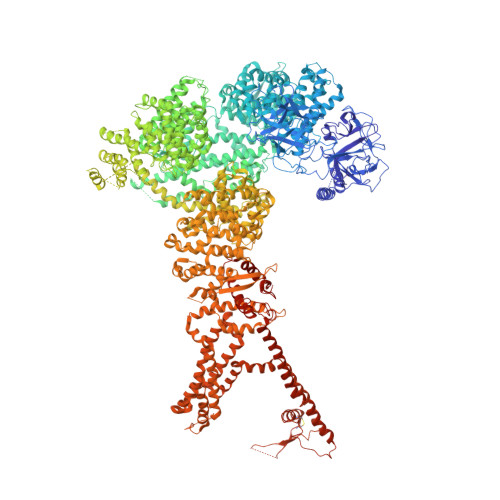Structural basis for the regulation of inositol trisphosphate receptors by Ca2+and IP3.
Paknejad, N., Hite, R.K.(2018) Nat Struct Mol Biol 25: 660-668
- PubMed: 30013099
- DOI: https://doi.org/10.1038/s41594-018-0089-6
- Primary Citation of Related Structures:
6DQJ, 6DQN, 6DQS, 6DQV, 6DQZ, 6DR0, 6DR2, 6DRA, 6DRC - PubMed Abstract:
Inositol trisphosphate receptors (IP 3 Rs) are ubiquitous Ca 2+ -permeable channels that mediate release of Ca 2+ from the endoplasmic reticulum, thereby regulating numerous processes including cell division, cell death, differentiation and fertilization. IP 3 Rs are jointly activated by inositol trisphosphate (IP 3 ) and their permeant ion, Ca 2+ . At high concentrations, however, Ca 2+ inhibits activity, ensuring precise spatiotemporal control over intracellular Ca 2+ . Despite extensive characterization of IP 3 R, the mechanisms through which these molecules control channel gating have remained elusive. Here, we present structures of full-length human type 3 IP 3 Rs in ligand-bound and ligand-free states. Multiple IP 3 -bound structures demonstrate that the large cytoplasmic domain provides a platform for propagation of long-range conformational changes to the ion-conduction gate. Structures in the presence of Ca 2+ reveal two Ca 2+ -binding sites that induce the disruption of numerous interactions between subunits, thereby inhibiting IP 3 R. These structures thus provide a mechanistic basis for beginning to understand the regulation of IP 3 R.
Organizational Affiliation:
Structural Biology Program, Memorial Sloan Kettering Cancer Center, New York, NY, USA.
















